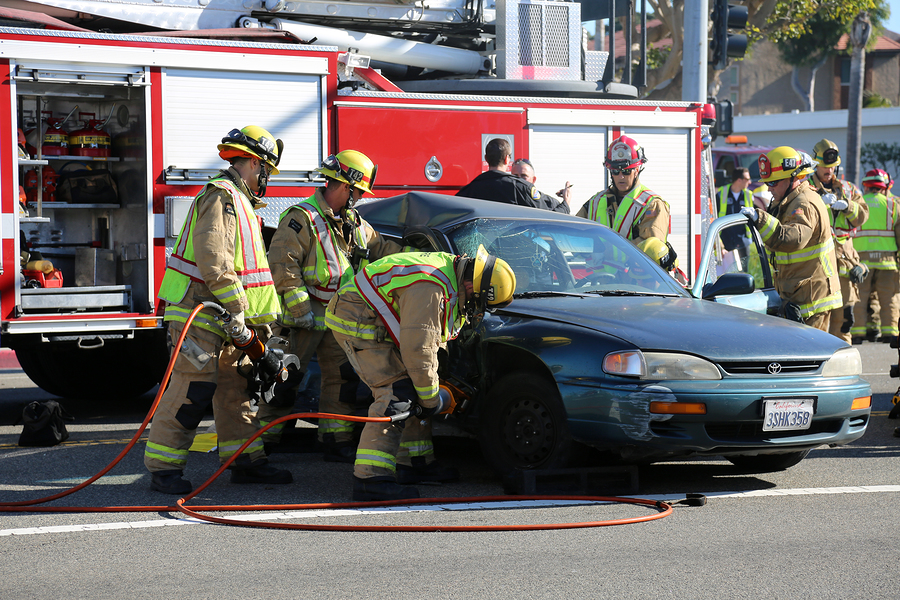New York City is a heavily congested city; 8.5 million people squeezed into just 300 square miles. It comes as no surprise then, that along with New York City traffic comes vehicular accidents of all types, especially at busy city intersections. One of the most common types of these accidents at intersections is the T-bone collision.
What Are T-Bone Accidents?
T-bone accidents, sometimes referred to as broadside crashes, are car accidents that usually result from the front-end of a vehicle colliding with the side of another car. (The collision resembles the shape of the letter T.) These types of crashes are common at busy intersections and may result from driver negligence, driver distractions, and even mechanical failures.

Broadside crashes frequently result in fatal and severe bodily injuries, including broken bones, fractured ribs, spinal injuries, muscle and ligament tears, and severe head traumas. T-bone collisions also often lead to secondary crashes, such as when a car spins away from the first, T-bone impact into oncoming traffic or off the road. Further, because the side of a car provides only a thin physical barrier, drivers and passengers in the vehicle hit on its side can sustain especially-severe injuries.
Who Is at Fault for T-Bone Accidents?
Either driver (or neither of them) can bear fault for causing a T-bone accident. Determining responsibility usually starts at examining the scene of the crash.
The Right of Way and Traffic Signals
When T-bone accidents result from a driver failing to yield to the right of way, meaning their vehicle fails to stop at a red light or a stop sign, that driver may bear liability for the accident.
However, even a driver who has a green light or the right of way must still approach and enter an intersection with due care. If a driver decides to drive recklessly through an intersection, even if that driver has the right-of-way, then that driver could bear fault for a resulting crash.
Left Turns
Another common cause of the T-bone accident involves drivers making left turns at busy intersections. Drivers should only make left turns if they can do so with reasonable safety, which means that the road is clear and free of oncoming traffic. If the driver decides to make a left turn when the path is not clear, and their turn results in an accident, they can be liable for the crash.
What to Do When You’re in a T-Bone Accident
Any car accident can leave you feeling helpless and stressed. However, by following the suggestions below, you might protect your legal rights and save yourself a lot of anxiety, if you ever have to navigate the aftermath of a car accident in New York City.
- File a police report: New York law requires that the driver of any car involved in a car accident must contact the police as soon as possible. At the scene, police will write up a report, which will include a preliminary determination of which driver was at fault. Always cooperate with the police and indicate your side of the story; however, avoid volunteering information that might point to your own fault in the accident.
- Make no statements to the other driver: Other than exchanging information with the other driver, do not get into any arguments or make any statements to them about who was at fault.
- Photograph the accident scene: If you can do so safely, try to take as many photographs of the accident as you can. Images from multiple angles can provide vital evidence in a later legal action seeking damages for your accident.
- Get contact information for witnesses: Try to obtain any names, phone numbers, or contact info of bystanders who witnessed the crash.
- Report the accident to the DMV: Under the New York State Vehicle and Traffic Law, you must file an MV-104 report with the DMV when there are property damages that exceed $1,000, or anybody is killed or injured. The MV-104 report is required within ten days of the accident; otherwise, the DMV may suspend your driver’s license.
How to Handle the Insurance Company
New York is a no-fault insurance state, which means drivers must carry insurance that covers their own injuries resulting from an automobile accident, no matter who is at fault. The minimum coverage required by law includes:
- $25,000 for bodily injury/ and 50,000 for the death of a person that is involved in the accident.
- $50,000 for bodily injury/ and 100,000 for the death of two or more people in the accident.
- $10,000 for property damage that is caused by a single-car accident.
After the Accident
After a T-bone accident, a driver must usually report the crash to their insurance company to claim no-fault benefits. The insurance carrier will usually open an investigation into the matter, which will include obtaining the following documents and information:
- The police report and photographs of your car.
- Statements of parties and witnesses.
- Medical records.
- A vehicle damage estimate of your car.
Insurance Settlements and Seeking Compensation:
After conducting an investigation, your insurance company may make you a settlement offer to cover your damages. In addition, if another party was at fault in the accident, that party’s insurance company may also offer to pay you a “settlement” in exchange for you giving up your rights to take legal action. Speak with an attorney before agreeing to either offer of settlement. You may have valuable legal rights that need protecting.
Legal Representation
T-bone crashes are complex accidents that can cause devastating injuries. Let an experienced legal professional help you obtain the compensation you deserve. If you were in a T-bone crash or any other automobile accident in New York City, and need further information, talk to an attorney and find out whether you have a good case for seeking compensation.



